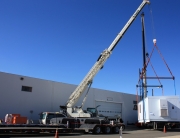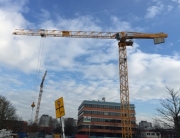Transporting heavy and large loads is a vital job to manufacturing and construction sectors. It poses high potential threats to the workers, if it is not executed properly. The OSHA, a sole regulator body for crane industries in the US, has always been providing the most applicable guidelines to crane operators so as to ensure the crane system is being operated appropriately by following all the safety guidelines. Crane and hoist threats are mentioned in precise ethics in OSHA’s safety guidelines for the industries such as mining, construction and manufacturing.
The OSHA provides some important information in order to educate the operators in complying with their duties under the OSHA law. It is free consultation services that allow the contractors and businessmen to seek the assistance on safety guidelines. On the other side, workers have right to file a complaint against employer and ask the regulator to conduct an inspection at the workplace.
So, with the above facilities from the regulator, it is convenient for the workers to seek help from the regulator if they find their workplace unsafe.
On the other hand, the regulator has been providing rationalized guidelines to the operators so as to make sure the system is being used safely. It periodically suggests the operators to utilize safety devices such as load moment indicators, safety alerts, fall protection, hoist protection, and others. Though, the crane systems are now safer and more convenient to execute the project with the advent of high-end safety devices in crane industries like LSI Wireless GS550 Display, yet it is prerequisite to follow the guidelines, which are prominently designed to ensure the workers’ right is entertained suitably.
Source: www.osha.gov








